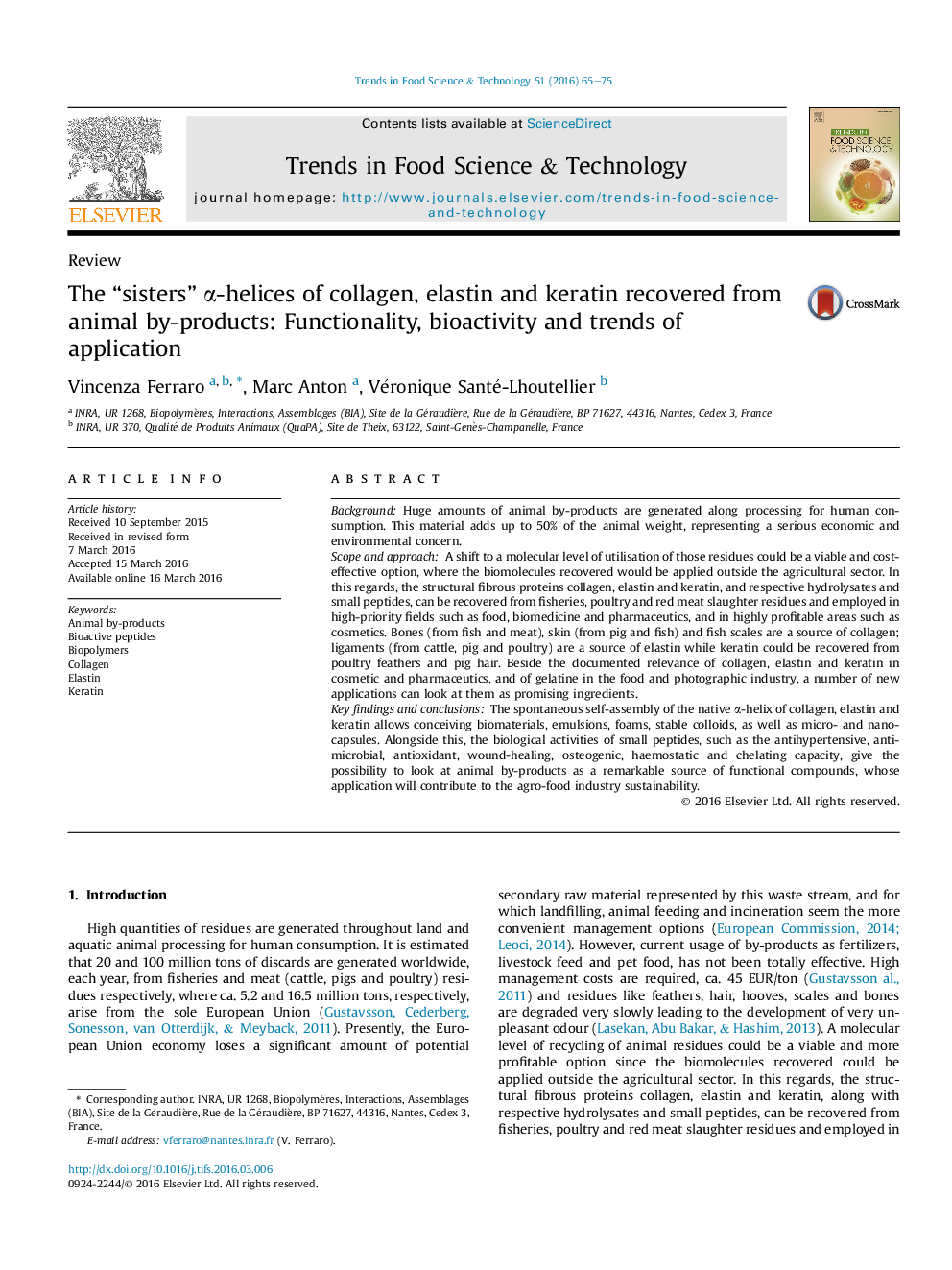| Article ID | Journal | Published Year | Pages | File Type |
|---|---|---|---|---|
| 2098525 | Trends in Food Science & Technology | 2016 | 11 Pages |
•Collagen, elastin and keratin can be recovered from animal by-products.•They are structural fibrous proteins showing broad functionality and bioactivity.•The whole or hydrolysed form can be applied according to specific purposes.•Bio-based application can be conceived.•The recovery could prompt innovation and better valorization of animal by-products.
BackgroundHuge amounts of animal by-products are generated along processing for human consumption. This material adds up to 50% of the animal weight, representing a serious economic and environmental concern.Scope and approachA shift to a molecular level of utilisation of those residues could be a viable and cost-effective option, where the biomolecules recovered would be applied outside the agricultural sector. In this regards, the structural fibrous proteins collagen, elastin and keratin, and respective hydrolysates and small peptides, can be recovered from fisheries, poultry and red meat slaughter residues and employed in high-priority fields such as food, biomedicine and pharmaceutics, and in highly profitable areas such as cosmetics. Bones (from fish and meat), skin (from pig and fish) and fish scales are a source of collagen; ligaments (from cattle, pig and poultry) are a source of elastin while keratin could be recovered from poultry feathers and pig hair. Beside the documented relevance of collagen, elastin and keratin in cosmetic and pharmaceutics, and of gelatine in the food and photographic industry, a number of new applications can look at them as promising ingredients.Key findings and conclusionsThe spontaneous self-assembly of the native α-helix of collagen, elastin and keratin allows conceiving biomaterials, emulsions, foams, stable colloids, as well as micro- and nanocapsules. Alongside this, the biological activities of small peptides, such as the antihypertensive, antimicrobial, antioxidant, wound-healing, osteogenic, haemostatic and chelating capacity, give the possibility to look at animal by-products as a remarkable source of functional compounds, whose application will contribute to the agro-food industry sustainability.
